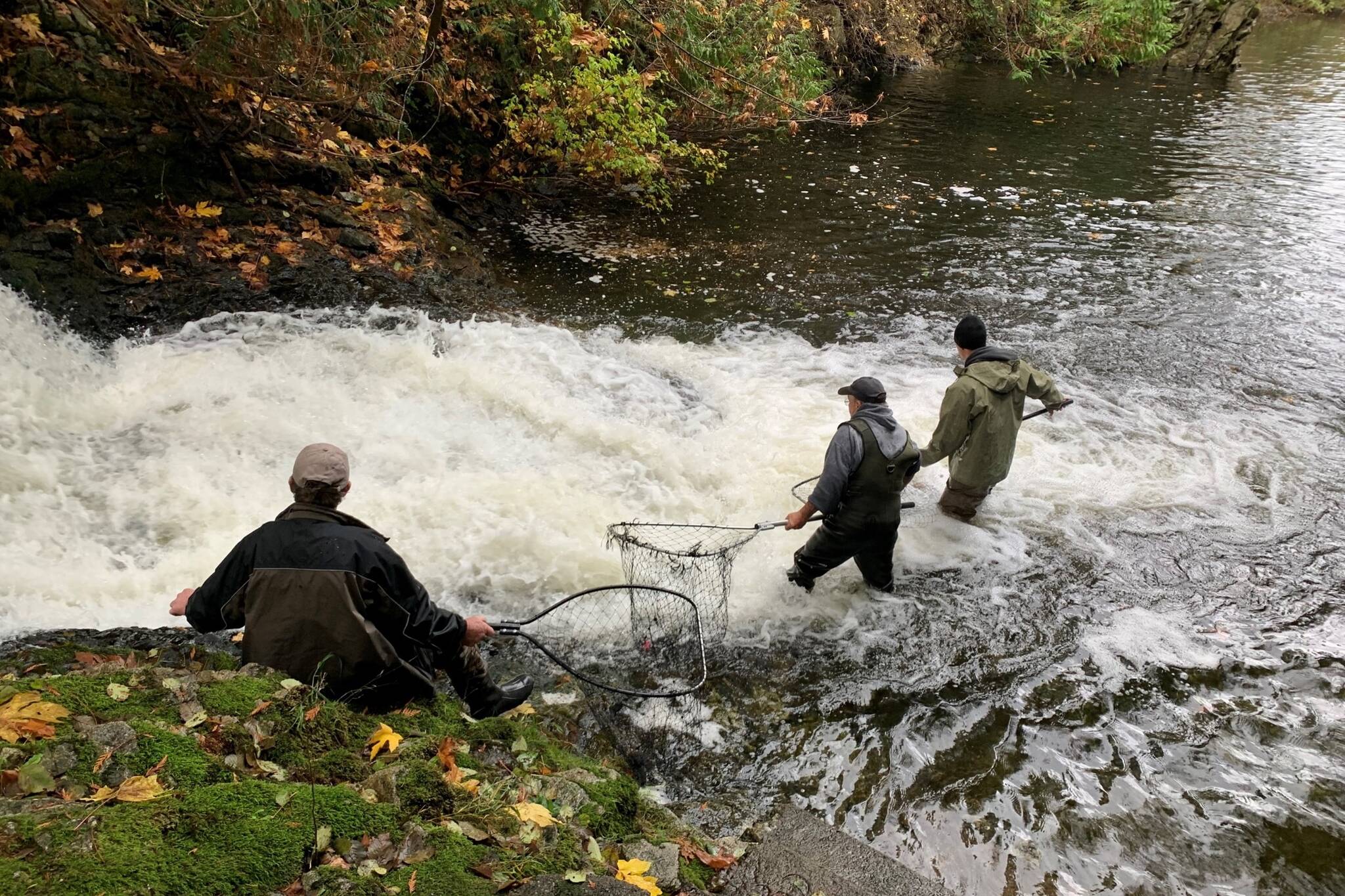Tim Kulchyski says salmon used to be so plentiful off Vancouver Island that they would shake his Cowichan ancestors’ dugout canoes as they collided in the waters of the Salish Sea.
No longer. Pacific salmon stocks are fragile now, in part because human-made barriers prevent the fish from travelling up-river to their natural spawning grounds, he says.
Members of the Mill Bay Conservation Society, a group of volunteers near Kulchyski’s home, 50 kilometres north of Victoria, have taken the fish into their own hands — literally. They have built a human-propelled salmon run, carrying thousands of spawning salmon from a fish trap in the Salish Sea, up a hillside, above several waterfalls and across the Trans-Canada Highway before releasing them into nearby Shawnigan Creek.
Many hands are making more fish. This Earth Day the group will celebrate carrying a record-breaking 7,300 returning Coho salmon in a single season — 30 times more than 15 years ago when the society started counting the fish they carry. “Millions of eggs will be hatched from these fish,” says Alexander Hyndman, a volunteer. Those eggs translate into hundreds of thousands of young salmon that will swim into the Salish Sea.
Mill Bay’s salmon run is complex and requires at least 10 volunteers, some wearing hip-waders. After the salmon swim into the trap, they are guided up a fish ladder and funnelled into troughs. Volunteers then place each fish into a wheeled tank that is pulled up the steep hillside on a homemade rail system pulled by a pickup truck.
At the end of their rail journey, the salmon are unloaded one by one, placed into tanks and driven to release areas on the upper creek. The gender and condition of each fish is recorded.
Ken Gray, a 69-year-old retired dairy farmer from Alberta, who leads the initiative, says he can call on about 200 volunteers, including children from three local schools.
One is Shawnigan Lake School, which has a more than 20-year relationship with the Mill Bay volunteers. Scott Noble, the school’s recently retired mascot known as “Enviro-Man,” says that the Mill Bay fish carry provides great hands-on experience for students. He says he has many memories of “students with big eyes and smiles on their faces” handling the fish.
Climate change has made the group’s work more challenging. The June 2021 heat dome, which caused the deaths of as many as 600 B.C. residents, slowed Shawnigan Creek’s flow to a trickle. Many young salmon from the 2020 spawning season perished, says Gray.
Just a few months later, three storms known as atmospheric rivers brought a torrent of water into the creek, more than had ever been measured before. The sheer force of the water may have scoured or deposited silt on salmon spawning beds, says Gray.
“Returns in the years ahead will tell us how much damage has actually taken place.”
Despite such setbacks, Kulchyski is optimistic that his grandchildren may one day see salmon in the numbers remembered by his ancestors.
“We are lucky to have many people in the community who care about salmon.”
—Katharine Lake Berz, The Canadian Press
RELATED: Conservation groups work to protect salmon in the Columbia River

